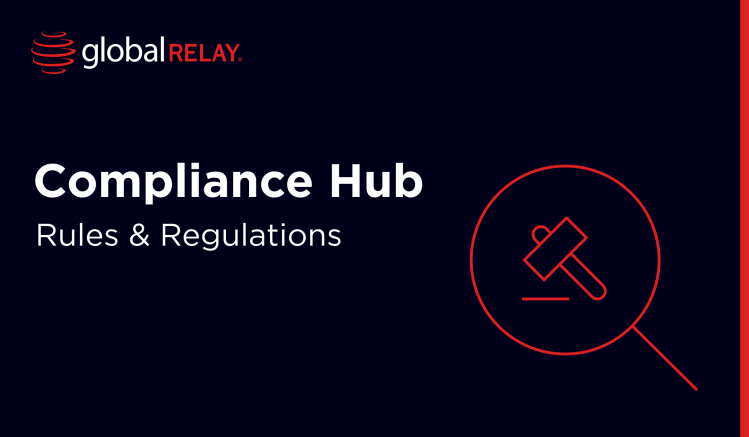Written by a human
What does Federal Rules of Civil Procedure Rule 26 mean for organizations?
Rule 26 of the Federal Rules of Civil Procedure (FRCP) dictates protocols for the conduct of pretrial information discovery for civil litigation in U.S. federal courts.
The need to correctly and adequately fulfill discovery obligations under FRCP Rule 26 poses a major challenge with myriad risks attached. Yet organizations can quickly find themselves overwhelmed trying to find the right records when time or resources are tight.
In this article, we’ll outline what Rule 26 of the Federal Rules of Civil Procedure is, the fundamentals behind its key principles, and how organizations can leverage strategies for mitigating operational risk associated with meeting obligations mandated by Rule 26.
What is Federal Rules of Civil Procedure Rule 26?
Rule 26 of the Federal Rules of Civil Procedure outlines key discovery protocols around revealing witnesses, documents, and interrogatories.
From the breadth of lawsuits covered, to the expansive evidence and questioning permitted within reasonable confines, Rule 26 has an extensive ambit and sweep in federal civil procedure discovery.
Taking a deeper look at FRCP Rule 26 reveals that it:
- Mandates under Federal Rule of Civil Procedure 26(a)(1) that parties make initial disclosures of documents and witnesses central to fact-gathering.
- Enables written interrogatories and depositions to uncover further case evidence.
- Sets ground rules for what materials can remain confidential or privileged.
- Outlines the scope of permissible discovery and its proportionality to case needs.
Establishes disclosure exemptions when burdens outweigh benefits.
Proportionality and Federal Rules of Civil Procedure Rule 26
Rule 26 dictates the pretrial information exchange (commonly referred to as Rule 26 electronic discovery or simply eDiscovery) between parties to uncover relevant proof. At its core, Rule 26 seeks to strike a balance between efficient case development and reasonable demands in the face of litigation stakes.
Since discovery places distinct evidence disclosure burdens on parties, legal teams must grasp Rule 26’s proportionality principles at an early stage. Much discussion continues to take place on the topic of proportionality and what exactly the term constitutes, especially in light of an additional consideration that was added to Rule 26 in 2015. However, according to Bloomberg Law practical guidance, the 2015 amendment to Rule 26(b)(1) of the Federal Rules of Civil Procedure is a reflection of legacy, and not change.
What are the key principles of Federal Rules of Civil Procedure Rule 26?
The bedrock philosophy of Rule 26 is eliminating unnecessary secrecy around core evidence, while preventing an excessive swathe of unnecessary inquiries unlikely to yield pertinent evidence.
Overlaying this foundation of transparency and proportionality are five key principles:
- Parties must reveal certain core information related to witnesses, documents, damages, and insurance agreements upfront, even before discovery demands. This promotes transparency and efficiency throughout the process.
- Discovery under Rule 26 can address any non-privileged matter relevant to or supportive of central claims or defenses raised in the pleadings of the litigation at hand. The scope is intentionally broad, yet the term ‘relevant’ is crucial.
- The discovery sought must align with the stakes involved in the case, and excessive requests face objections. Judges weigh up the burden versus benefit. This is to restrict unnecessarily wide-ranging demands with the sole purpose of complicating or inflating adversary costs.
- Parties have an ongoing duty to supplement disclosures and responses as soon as more information tied to the mandated categories comes to light, as per FRCP Rule 26(e), which concerns supplementary disclosures. This is intended to foster a sense of collaboration between parties and also prevents surprise revelations right before a trial.
- If presented with good cause, courts can issue orders aimed at protecting certain confidential commercial information from unwarranted disclosure and associated potential competitive harm.
Having a strong grasp on the key principles of Federal Rule of Civil Procedure 26 should form an essential part of your compliance strategy. Leveraging this knowledge puts you in a stronger position to conduct more targeted, efficient discovery activities to ensure litigation readiness.
How is Rule 26 Federal Rules of Civil Procedure Enforced?
Federal Rule of Civil Procedure 26 is enforced in federal civil litigation through various means:
- Judges preside over the discovery process and pretrial conferences to administer requirements, review disputes, and impose remedies addressing non-compliance with the obligations under Rule 26.
- Failure to fulfill discovery duties under Rule 26 can prompt courts to level punitive sanctions on parties and counsel. These can include imposing fines, awarding attorney fees, determining facts against an offender, prohibiting evidence concealment, and even dismissing claims.
- Courts have the power to disallow evidence that was not disclosed properly and timely in accordance with Rule 26 stipulations. This includes witness testimonies and pivotal documents that support allegations.
Judges wield significant leverage through sanctions and exclusion to compel adherence with disclosure duties, question limits and overall discovery proportionality principles under Rule 26.
Incomplete responses to valid information requests or not meeting deadlines for disclosure risks harsh sanctions for organizations. Substantial monetary penalties, evidence preclusion impacting legal arguments, and even potential default rulings imposing unfavorable judgment are all potential consequences.
How to reduce your risk of non-compliance with Rule 26 Federal Rules of Civil Procedure
Rule 26 strikes at truth-finding proficiency and speed by compelling early transparency around witnesses and documents central to alleged facts.
With this in mind, the need for in-depth understanding of your organization’s data assets is intrinsically weaved through Rule 26’s mandate tapestry. Courts expect parties to work out a plan regarding discovery and move toward a resolution based on that plan. Therefore, the key is in the preparation.
Given Rule 26’s remit, prudent organizations should prioritize understanding and correctly adhering to stipulations to avoid negative outcomes, like contempt charges or mistrials through procedural violations, which can disadvantage legal outcomes.
Leverage the right tools when it counts
When time is of the essence, taking the right course of action from the outset is paramount.
Finding, collecting, and presenting relevant, accurate, and complete data is no mean feat for large-scale and well-established organizations. The sheer volume of data to be combed through when responding to a legal request for data, subpoena, or investigation can pose a huge challenge.
With Global Relay’s eDiscovery service, we’ll search, find, and retrieve your company-wide communications data, streamlining your eDiscovery and legal audit process.
Global Relay gives your Legal and eDiscovery teams instant access to data, communications analysis using AI-assisted tools, and the ability to manage legal holds and data retention in a single platform.
Reduce risk, empower your team, and preserve a clean chain of custody in one unified platform with Global Relay’s eDiscovery service.

